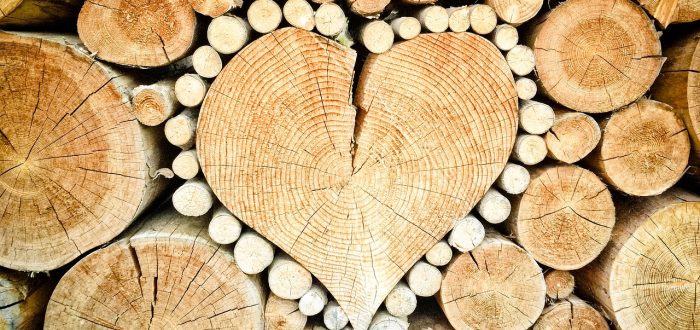Environmental, Social and Governance (ESG) is a set of standards used to measure the impact of a company on society and the environment, as well as how transparent and accountable it is.
In 2019, a new law was introduced in the UK to achieve net zero greenhouse gas emissions by 2050. To help get us there, the government added more weight to reporting requirements, including around ESG factors.
A key regulatory factor for ESG disclosure in the UK is the Companies Act 2006. This includes obligations for annual reporting for larger companies that are either listed, have a £500 million+ turnover, or employ more than 500 people.
But organisations that don’t meet these criteria may still get involved in ESG reporting for various reasons, including boosting their competitive edge and appealing to investors.
Disclosing non-financial information has always been a necessity in annual reports. But in 2022, the Companies Act was expanded to include sustainability information.
The new requirements are aimed at meeting the recommendations made by the Task Force on Climate-Related Financial Disclosure (TCFD). Companies are now required to report on their environmental impact, their approach to social matters, their respect for human rights, and their anti-bribery and anti-corruption policies.
Specifically in terms of the environment, companies are required to make disclosures on:
- Climate change-related risks and opportunities
- How climate change is dealt with through corporate governance
- How climate risks impact upon their general business strategy
A high scoring business with good ESG reporting is considered to be in a better position to manage future risks and embrace emerging opportunities, which would effectively make it a greater investment prospect.
Companies with low scores could be thought of as unsustainable. This could result in them being excluded from portfolios, which may impact negatively on stock prices.
With approximately 50% of assets managed using responsible criteria across Europe, it is important that companies take steps to improve their ESG scores, regardless of whether they are required by law to do so.
There are many ways in which this can be approached. In terms of the ‘E’ – environmental factors, companies will be looking primarily at ways to reduce energy waste and cut their carbon footprint. Obvious measures will include better energy management and waste reduction strategies.
But there’s also a way to boost sustainability and cut the carbon footprint, and that is by switching from solid wood furnishings and interior design features, to natural wood veneers.
How can natural wood veneers help in the fight against climate change?
Wood is a naturally sustainable resource, when correctly managed. For example, if trees are replaced, or the product itself is used optimally.
Trees play a vital role in reducing carbon within the atmosphere. They are known as ‘carbon sinks’, locking up carbon for centuries through photosynthesis and protecting the environment from its damaging effects.
This is why we need to do as much as possible to protect trees. One way of doing this is to use wood veneers rather than solid wood.
Wood veneers have traditionally been thought of as the poorer choice compared to solid wood. But in reality, they offer multiple benefits.
When you compare wood veneers to solid wood, it becomes clear that veneers present an array of advantages. These include flexibility in design, durability and reduced maintenance. They also offer enhanced sustainability.

What are wood veneers?
Veneers are created by slicing very thin layers of wood from the log. These thin layers are then applied to a substrate, such as MDF, plywood or particle board. From time to time, they may also be applied to hardwood or softwood.
There is a range of veneer cutting techniques which produce a variety of results. Depending on the way the log is cut, you will see an array of different grain patterns, as well as characteristic knots and burls.
During the process of applying the veneer to the substrate, various veneer matching techniques are used to produce a range of effects. Narrow strips of veneer are applied to the edges of the products to create a perfect finish. This is known as edge banding.
The key benefit of using wood veneers rather than solid wood is that there is zero waste, because all the wood from the log is used. The resulting pieces – whether furniture or panels – look just as eye-catching as solid wood, but so much less wood has been used.
Are wood veneers more sustainable than solid wood?
Furniture that bears Forest Stewardship Council® (FSC) certification is made from timbers sourced from forests and plantations that have been managed in line with environmentally friendly standards. New trees are planted to replace those cut down to produce furniture.
The problem is that some trees can take several years to grow to full size. Ebony, for example, can take 100+ years to reach its maximum height and spread. This means that even if new trees are planted when they are cut down, it could be almost a century before they are doing the same job.
Therefore, in cases like these, it is more sustainable to use wood veneers rather than solid wood. The amount of wood veneer required to cover a piece of furniture is significantly less than using solid wood, which means fewer trees are cut down to achieve the same aesthetic results.
How can wood veneers support ESG?
Providing wood veneers are handled by Forest Stewardship Council ® (FSC) certified woodworkers and furniture makers who work in line with the organisation’s global standards governing the promotion of responsible forest management, you’ll know that you can rely on them to support your ‘E’ in ESG.
Here at Read Veneers, we have been working closely with interiors specialists, bespoke cabinetmakers, joiners and contractors for over 30 years.
Our services cover every aspect of veneer woodworking, which means we are able to provide pieces fully machined and ready to fit, or prepared for your own finishing.
To learn more, give us a call on 01277 811 771 or get in touch for more information on how our natural wood veneering services can support environmental social governance.


